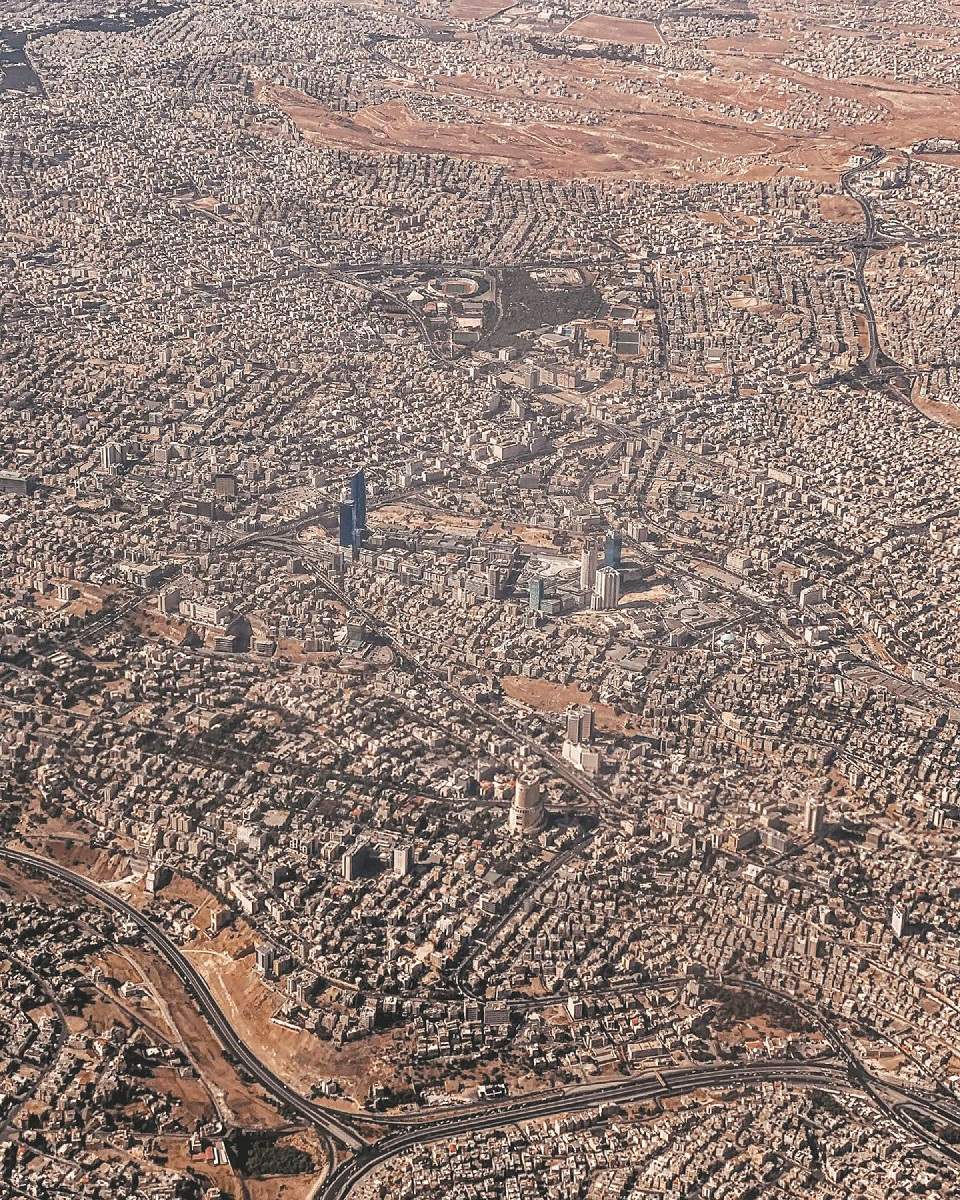For the past few days, Jordanians have been busy talking
about a picture of the capital taken from an airplane by Jude Al-Safadi.
Posted with the caption read: “These lego pieces hold my
whole life, every human I’ve ever known, the home I’ve lived in my whole life,
so many lives and it’s all as small as a pixel, so trivial and yet so
significant. It’s a beautiful dichotomy.”
اضافة اعلان
What Safadi probably didn’t expect is the influence the
picture would have and the debate it would stir. Some found it a beautiful documentation
of their city, while others described it as “ugly”, “suffocating”, or even “a
terrible catastrophe of urban planning”.
 A photograph of Amman taken by Jude Al-Safadi. Responses to the photo ranged from positive to negative concerning Amman’s appearance. (Photos: Jude Al-Safadi’s Facebook page)
A photograph of Amman taken by Jude Al-Safadi. Responses to the photo ranged from positive to negative concerning Amman’s appearance. (Photos: Jude Al-Safadi’s Facebook page)
The aerial picture doesn’t offer that different of a
perspective from walking around the city: the absence of greenery and public
spaces isn’t a surprise and who could miss the cubes of cement that are Amman’s
buildings, along with the never ending sprawl and emerging of new “centers”.
To many, Amman is missing the basic features of a city,
which make it look like a small village that kept growing until it became a
huge village, but to be fair, isn’t that what technically happened?
In order to reach a better understanding or perhaps offer
solutions, it is important to be familiar with the timeline of the city.
Amman as we know it today is only a 100 years old, which
means it is still a baby compared to other cities in the region, yet it is the
Middle East’s fastest growing city.
Although it dates back to 7,000 BC and was known as Rabbath
Ammon, the capital of the Ammonite civilization, before becoming Philadelphia
under Roman rule and then becoming abandoned in the 15th century.
It is worth mentioning that there were bedouins in the area,
but the bedouin lifestyle required continuous movement and no need for cities
or urban spaces.
It wasn’t until 1878 that Amman was reinhabited, when
Circassians settled in the valley near the Roman Theater and Amman Citadel,
which shaped the city’s very first urban space.
By 1900, Amman could be considered a proper village, with
people building houses up the mountains surrounding the valley and creating a
new urban pattern.
After 1916 and the Arab Great Revolt against the Ottomans,
The Emirate of Transjordan was established in 1921 and a transfer of authority
gradually took place.
By that time, buildings had started to crowd the area around
the Husseini Mosque, which was becoming the center of the village’s growth.
After the Jordan River Earthquake of 1927, many buildings
were demolished and people lost their lives, leaving many to start building on
top of the surrounding mountains.
During the 30s and 40s, the emerging city attracted
Palestinian, Syrian, and Lebanese merchants who went on to build the city’s
oldest villas.
In 1946 and after the full independence, the first
government of Jordan came into existence and brought with it new functions,
positions, and social classes.
The Palestinian Nakba in 1948 (or catastrophe, which refers
to the 1948 Arab-Israeli war and the loss of Palestine), further brought huge
numbers of refugees, the population almost doubled in numbers, however, city
planning had been absent since the city was reestablished.
The refugee influx resulted in a swelling modern city with
the lines of eastern and western Amman beginning to be drawn. Driven by
modernism and access to vehicles, the city’s design began to take shape as one
built for cars rather than humans and pedestrians.
More Palestinian refugees came with the Naksa (or setback,
referring to the1967 Arab-Israeli war and Arab loss), and the refugee camps in
Amman became permanent, leaving entire neighborhoods were never planned to be
there.
The “spine” of Amman, the main circles from the first to the
eight, was built in 1970 as an attempt to draw clear outlines and somehow
connect the city’s chaotic neighborhoods.
The 1992 Gulf War and the Iraq invasion in 2003 also brought
a sudden influx of refugees.
The constant spikes in the
city’s population were never
planned for, and the village of Amman was forced to become a city that was
never planned for.
In 2002, the Greater Amman Municipality (
GAM) was
established to organize the chaos city, and it brought with it a data base for
land use and worked on projects to remove stalls, while still somehow
preserving a defined identity.
One of GAM’s regulations was that 15 percent of the city’s
built area has to be green,. However, many people have questioned if this
actually being applied in reality due to the absence of greenery.
It might be difficult to create a master plan and impose
parks and public spaces in an already existent city, but it isn’t impossible.
The first step might be to stop or control the growth of the
suburbs of the city, which become nothing but lifeless blocks that will be
swallowed up by the city within few years when it continues to expand even
more.
Read more
Trending





